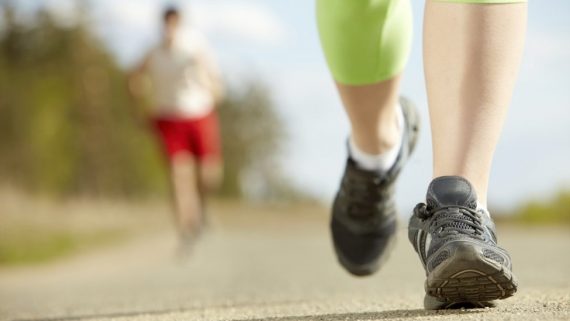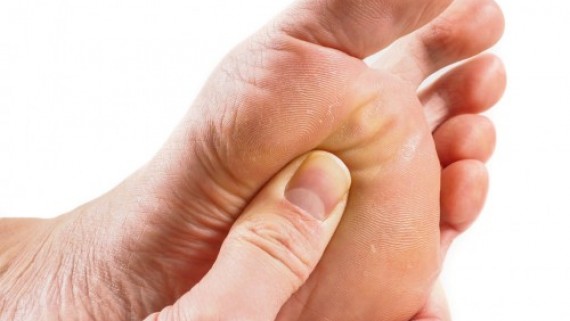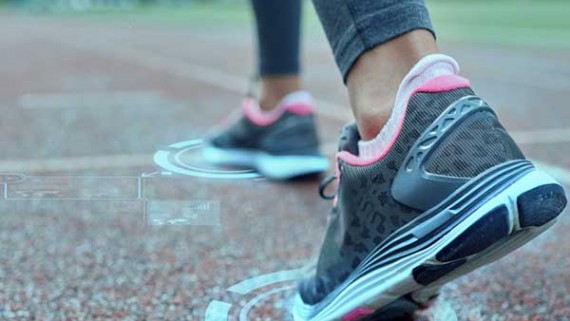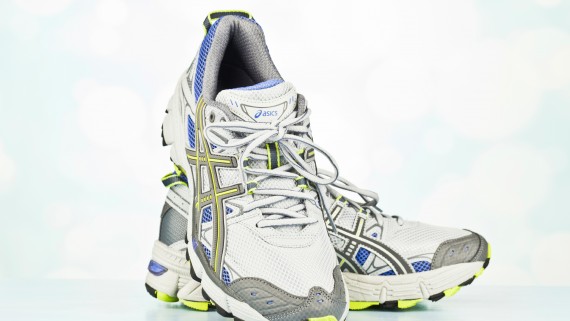Walking and Running
Did you know that daily walking and/or running are some of the most important steps in reducing your risk of heart disease, diabetes, osteoporosis and many other serious health conditions?
You may be wanting to improve your well-being, or reduce your risks of health conditions, or simply to start a new hobby, so here are some easy steps to begin your walking/running routine!
- Set realistic targets and goals. This could be a walking/running distance, weight loss (in combination with good diet), or seeing if you can improve your time running around the block.
- Ensure you have the most appropriate shoes possible by seeing a Podiatrist, who can also help you plan your walking/running sessions.
- Start off easy. This could mean a short walk around the block, or a light jog to the milkbar and back. Everyone is different, so do what works for you.
- Set a routine. Put a particular time aside each day for your exercise, and stick to it!
- If you’re feeling lonely, invite your partner, friend, colleague to exercise with you!
- Don’t feel bad if you have to skip a day, just stay positive and look forward to the next session!
- Make sure you’re having fun! Yes, you will get tired and sweaty, but if take notice of your surroundings, play some music and smile, you are on your way to making a beneficial routine!
For further advice on footwear, running, walking, click on the link below to make an appointment or call 1300 847 226.
http://www.thepodiatrygroup.com.au/booking/
Ankle sprains are one of the most common leg injuries that podiatrists treat every day. You can twist an ankle during sport, at work or just minding your own business at home. Whether you have twisted an ankle for the first time or the 10th time, it is a good idea to book an appointment with your podiatrist.
We can help you from start to finish. From a thorough assessment of the damage to the ankle to getting you back on your feet and doing what you love best.
Assessment of ankle sprains is very important, as there may be very little damage to the structures in the ankle or there can be a complicated bone fracture requiring urgent attention. For this reason, your podiatrist may need to refer you for ultrasound or x-ray imaging. Depending on the severity, we may cast the ankle or fit you with a moonboot. If the sprain is minor, a good supportive pair of runners may be recommended.
Once an ankle sprain is healed, a rehabilitation program is key to getting back to your activities and preventing ankle injuries in the future. Your podiatrist will develop a customised strengthening program to improve your balance and ankle strength and monitor your progress on a regular basis.
Don’t let that ankle sprain keep you down, book an appointment with The Podiatry Group on 1300 847 226.
As the clouds (eventually) start to clear we are reminded that Spring is upon us. It’s time to dust off those runners, get outside and start enjoying a bit of sunshine. If your runners are looking a little bit too dusty or your feet are feeling sore or fatigued when wearing them, it may be time for an update.
At The Podiatry Group, we can perform a biomechanical assessment of your feet. We look at your foot posture and your gait (the way you walk) to determine which type of runner would suit you best. Many people aren’t aware that runners should be replaced every 6-12 months if you have a relatively active lifestyle. The reason for this is that the structure of the shoe wears away over time and use, and the foam of the shoe compresses. A new pair of runners is often all you need to get that spring back in your step.
If you have got supportive footwear already but do find your feet and legs feel sore or fatigued, our assessment can help determine other factors that might be contributing to your pain. We can look at your activity levels and training/work surfaces to build an exercise plan that works for you.
Our management plan may also include a stretching and strengthening plan, activity modification, foot orthotics and ongoing regular assessments to make sure everything is running smoothly- the same way we want you to run!
Book and appointment with us online or call us on 1300 847 226.
Metatarsalgia – Ball of Foot Pain
So many foot problems can occur in our forefoot. As podiatrists we treat a wide range of problems associated with forefoot pain and deformity. Metatarsalgia is a non-specific term or general umbrella term if you will, for pain in the forefoot or ball of the foot.
Discomfort is usually located beneath the balls of our feet and is typically a result of increased forefoot pressure.
Bunions, hammertoes, short metatarsal bones, stress fractures, plantar plate disruption, Freiberg’s infarction, capsulitis, intermetatarsal bursitis and Morton’s neuroma area some possible causes of metatarsalgia.
Today we are talking about intermetatarsal bursitis.
Intermetatarsal bursitis
What is bursitis?
An inflammation or irritation of the bursa. A bursa is a small fluid-filled sac that provides cushioning and reduces friction, between and around the joints of the forefoot. Irritation of the bursa can cause swelling and pain (bursitis). The intermetatarsal bursae are located on the bottom of the foot near the base of the toes.
Bursitis can also affect other parts of the body – back of the heel/Achilles tendon, the knee, hip, shoulder and elbow.
How did I get this?
Generally, bursitis can occur through injury or repetitive motion causing irritation and inflammation. They can become irritated when one metatarsal bone takes more load than others.
Wearing narrow or excessively worn footwear during the day and different sporting activities can increase your chance of developing bursitis. Other factors can include;
- Overuse or excessive pressure on the forefoot
- Stress from abnormal foot mechanics
- Injury from a fall or hit to the area
- Less commonly due to certain types of arthritis; rheumatoid arthritis, gout, psoriatic arthritis
If I had bursitis, what would it feel like?
Friction can cause the space between the tendon, bone and skin to become inflamed – causing swelling, pain and possibly redness of the surrounding area.
Irritation and restricted movement of the affected joint may be evident and certain footwear or activities may exacerbate pain.
What do I do next?
- Apply ice to the area – this can help reduce inflammation
- Rest and avoid painful activities
- Non-steroidal anti-inflammatories if advised by your pharmacist
- Orthotics
- Footwear changes, avoid high heels!
- Reduce the amount of pressure being place placed on the bursa through off loading
- In chronic cases, injections of local anaesthetic and corticosteroid may be required in combination with padding
It’s important to attend a podiatry consult for assessment to determine the root cause, as other injuries can produce similar symptoms. Podiatrist may advise you on appropriate shoes and can also add padding to off load the pressure, prescribe orthotics and refer for any imaging that may be needed to rule out other conditions.
Contact us on 1300 847 226 or make an appointment online to speak with one of our friendly podiatrists about helping you get back on your feet sooner!
Free Podiatry Footwear Assessment
The Podiatry Group are offering Free Podiatry Footwear Assessments at Nicho’s Intersport in Warragul.
If you have trouble picking the right runner or shoe for your feet, or have any podiatry footwear related questions come on down and one of our podiatrists will assist you.
The Podiatry Group will be at Nicho’s Intersport (21 Smith Street Warragul) on Tuesday November 10th 4:30-5:30pm.
To make an appointment contact Nichos’ Intersport on 5622 3844.
Click on Nicho’s Intersport to check out the details of their store.
How to choose the right runner for you?
Choosing a new pair of runners can be overwhelming. Sometimes we look at our old and faithful runners and think maybe they’ll last me another 12 months, they don’t look too bad? Think again. Runners will only hold up on average for 600-800 kilometres. So if you run around 5 kilometres, three times a week and do no other training in your runners, then they should last you approximately 12 months. However, if you do this amount of running as well as using them every weekend then there life will be much shorter.
At the 12 month mark a shoe often looks in good condition from the outside, but it is the midsole that we cannot see that begins to break down and lose support. The shoe’s ability to absorb shock and provide cushioning begins to deteriorate as the shoe gets older and more worn.
Once we have come to terms with the fact that we need a new pair of runners where do we go? The bright lights and fancy colours on the shelves in the footwear stores may mesmerise us for a moment but it is important to keep our cool and that we don’t just choose a shoe based on it’s appealing colours.
Even your favourite shoe that you have worn for the last season may have changed. It may have changed weight; some will even try to drop by 20 grams, it may have changed material and therefore support. It is important that when choosing a runner you are aware of the support you require. Some runners are classed as neutral; providing cushioning and some are considered in the control category; providing differing levels of support. A runner with a higher arch and neutral running gait might be more suited to a neutral style of runner whereas a runner with a flatter foot and a pronated (rolled in) gait might be more suited to a control style of runner.
The first step before lunging head first in to the world of running shoe reviews on Google, is to have your gait (walking and running pattern) assessed by a podiatrist or by a footwear store with the capability and experience in assessing gait. This way you can be advised on a shoe that is best suited to your needs. This will include your running style, training surfaces, distance and goals. Then you can be confident that your money will be well spent- let’s be honest, the latest pair of high end runners cost a little more than a loaf of bread. You want to make sure you will like it before you buy it!
If you are serious about running then get your gait professionally assessed by The Podiatry Group and give yourself the best possible chance to enjoy your runs with the comfort and reliability of a good shoe.






